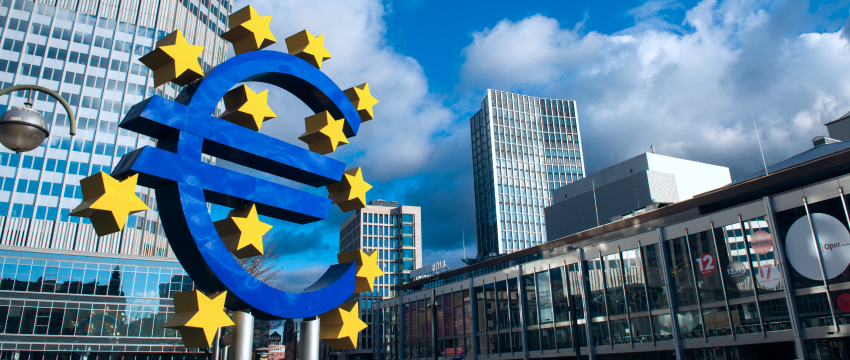Cuando los traders se sientan a enumerar los principales eventos que mueven el mercado de divisas, los principales factores que normalmente incluyen van desde publicaciones económicas hasta desarrollos geopolíticos y psicología del mercado. Pero más que cualquier otra cosa, hay una fuerza que siempre influye en la dirección de las divisas, y esa son los bancos centrales.
Los bancos centrales, sus políticas monetarias e incluso pequeños cambios de tono pueden tener un gran efecto en los mercados globales. Para aquellos que operan con forex o CFDs, entender a los bancos centrales es esencial.
Bancos centrales: Qué son y qué hacen
Un banco central es la principal institución financiera de un país. Su papel es mantener la estabilidad económica y financiera. Ejemplos conocidos son el Federal Reserve (Fed) en Estados Unidos, el Banco Central Europeo (BCE), el Bank of England (BoE) y el Bank of Japan (BoJ).
Los bancos centrales influyen en la oferta de dinero, gestionan las tasas de interés y actúan como prestamistas de última instancia durante una crisis. Cada uno de sus movimientos vale la pena seguirlo, ya que las monedas tienen una correlación directa con la política monetaria.

¿Por qué los bancos centrales son los protagonistas del forex?
Forex es esencialmente el comercio de una moneda contra otra. Forex implica negociar una moneda contra otra. Las monedas reflejan la salud económica de un país, y los bancos nacionales dirigen la economía y aseguran su estabilidad.
Las tasas más altas tienden a atraer capital extranjero, fortaleciendo la moneda, mientras que las tasas más bajas hacen lo contrario, debilitándola. Cada decisión de tasa por parte de una autoridad monetaria puede provocar ondas de choque en el mercado.
Además de las tasas de interés, los bancos centrales utilizan herramientas como el quantitative easing (QE) (compra de bonos gubernamentales para inyectar liquidez) o el quantitative tightening (QT) para eliminar liquidez. Estas políticas pueden generar tendencias a largo plazo en las monedas.
Los bancos centrales no solo actúan, sino que también se comunican. Si un banco nacional señala planes para cambiar las tasas o pronostica cifras económicas específicas, los traders reaccionan de inmediato. Una sola frase en un discurso puede iniciar movimientos dramáticos en el mercado.
Durante períodos de crisis financiera, piensa en la crisis de 2008 o en la pandemia de 2020, los bancos centrales intervienen con medidas de emergencia. Tienen la capacidad de calmar los mercados o, por el contrario, aumentar la volatilidad de manera significativa.
Los grandes actores del forex
Aquí se muestra cómo algunos de los bancos centrales más influyentes impactan el forex.
Como guardián de la economía más grande del mundo, las decisiones del Fed afectan casi todos los pares de divisas. El dólar estadounidense tiende a subir cuando el Fed aumenta las tasas, a menudo arrastrando a la baja a commodities como el oro. Cuando el Fed recorta las tasas o indica su intención de seguir una política dovish, el dólar tiende a debilitarse.
El BCE es responsable de la salud económica de la Eurozona y sus decisiones influyen tanto en el euro como en los mercados emergentes con conexiones a la Eurozona. Las conferencias de prensa del BCE son bien conocidas por causar brusca volatilidad del EUR/USD.
Reconocido por su política monetaria extremadamente expansiva, el BoJ ha mantenido las tasas de interés cerca o por debajo de cero durante un período prolongado. Los traders esperan con gran anticipación las intervenciones del yen, y Japón interviene regularmente para evitar una fortaleza excesiva de la moneda que perjudique las exportaciones.
Las políticas del BoE pueden tener implicaciones extensas, ya que Londres es un centro financiero. La GBP reacciona a las decisiones del BoE, lo que la hace ideal para traders que disfrutan operar cuando el mercado está en su punto más volátil.
El SNB es famoso por intervenir para gestionar el franco suizo. En 2015, cuando eliminó inesperadamente la paridad del franco frente al euro, los mercados experimentaron uno de los mayores shocks en la historia del forex.
Cómo los anuncios de los bancos centrales mueven el mercado
Los eventos de los bancos centrales se encuentran entre las fechas más esperadas en el calendario económico. Los traders especulan antes de las decisiones de tasas, y los mercados reaccionan de inmediato una vez que se realiza el anuncio. Un aumento o recorte inesperado puede hacer que las divisas se disparen o se debiliten.
Los gobernadores de bancos centrales como Jerome Powell o Christine Lagarde son cuidadosos con sus palabras, ya que saben que pueden influir en las divisas y en el sentimiento de los inversores simplemente al indicar un posible aumento o recorte de tasas. Los traders analizan cada frase, buscando pistas sobre la política futura.
Después del evento principal, los bancos centrales publican actas detalladas de sus reuniones. Los informes pueden revelar conflictos internos y ofrecer pistas sobre la dirección de la política. Pueden mostrar qué responsables de política estaban a favor o en contra de una tasa y proporcionar comentarios que aclaran aún más sus opiniones y acciones futuras.
Los bancos centrales también publican pronósticos de crecimiento, inflación y empleo. Estas proyecciones proporcionan orientación a los traders sobre la dirección de la política monetaria.
Operando con el efecto de los bancos centrales
Entonces, ¿cómo pueden los traders de forex y CFDs aprovechar al máximo la influencia de las autoridades monetarias en el trading?
Las reuniones de los bancos centrales generalmente se anuncian con mucha antelación. Resalta las fechas en tu calendario y prepárate para la volatilidad en esos periodos.
A los mercados les gusta anticipar las expectativas. Si un aumento de tasas ya se esperaba, el anuncio en sí puede tener poco impacto, a menos que sea una sorpresa.
Es un arte aprender a descifrar o leer entre líneas el lenguaje de los bancos centrales. Descripciones como “hawkish” (tendiendo a tasas más altas) o “dovish” (tendiendo a tasas más bajas) indican la dirección de la trayectoria de la política.
Las publicaciones de los bancos centrales pueden generar reacciones violentas en los precios y slippage. Usa órdenes de stop-loss, ajusta el tamaño de tus posiciones adecuadamente y evita el sobreapalancamiento.
A veces, la reacción inicial tras una publicación de un banco central es una exageración. Los traders inteligentes esperan a que el polvo se asiente y aprovechan la tendencia a largo plazo.

Ejemplos de ondas de choque de los bancos centrales
Hay muchos ejemplos a lo largo de la historia en los que los movimientos de los bancos centrales sacudieron los mercados:
Choque del SNB en 2015
El Banco Nacional Suizo eliminó inesperadamente la paridad EUR/CHF, haciendo que el franco se disparara y llevando a la quiebra a algunos brokers.
Referéndum del Brexit 2016 y la respuesta del BoE
La libra se desplomó, y las medidas de emergencia del BoE aumentaron la volatilidad.
Acciones del Fed durante la pandemia de 2020
El Fed redujo las tasas a cero y lanzó un enorme QE, haciendo que el USD bajara y aumentando los activos de riesgo.
Ciclo de ajuste del Fed en 2022
El Fed aumentó las tasas, lo que ayudó a fortalecer el dólar, afectando a los mercados emergentes y a las divisas relacionadas con commodities.
Bancos centrales y la perspectiva general
Los bancos centrales son poderosos, pero no actúan solos. La política monetaria tiende a interactuar con otras tendencias y eventos:
Los bancos centrales endurecen la política durante períodos de alta inflación y la relajan en tiempos de baja inflación. Las expectativas de los bancos centrales se ven influenciadas por los informes de empleo. Guerras, pandemias y conflictos políticos influyen en la toma de decisiones de las autoridades monetarias.
Al estar al tanto tanto de los eventos de los bancos nacionales como del contexto global más amplio en el que se desarrollan, los traders están mejor preparados para tomar decisiones más acertadas e informadas.
Conclusión
Los bancos centrales no son actores secundarios, sino los verdaderos protagonistas del forex. Sus políticas guían la dirección de las divisas, sus palabras generan volatilidad y sus decisiones crean oportunidades para los traders.
Si estás operando con forex, debes asegurarte de estar al tanto de todos los principales anuncios y políticas de los bancos centrales que podrían influir en las divisas que estás negociando.
Sigue sus calendarios, estudia su lenguaje y prepárate siempre para posibles sorpresas. Al comprender cómo estas instituciones mueven los mercados, estarás mejor preparado para convertir la volatilidad en oportunidad.
Descargo de responsabilidad: Este material tiene fines informativos y educativos generales únicamente y no debe considerarse como asesoramiento ni recomendación de inversión. T4Trade no se hace responsable de los datos proporcionados por terceros a los que se hace referencia o que aparecen en hipervínculos en esta comunicación.




